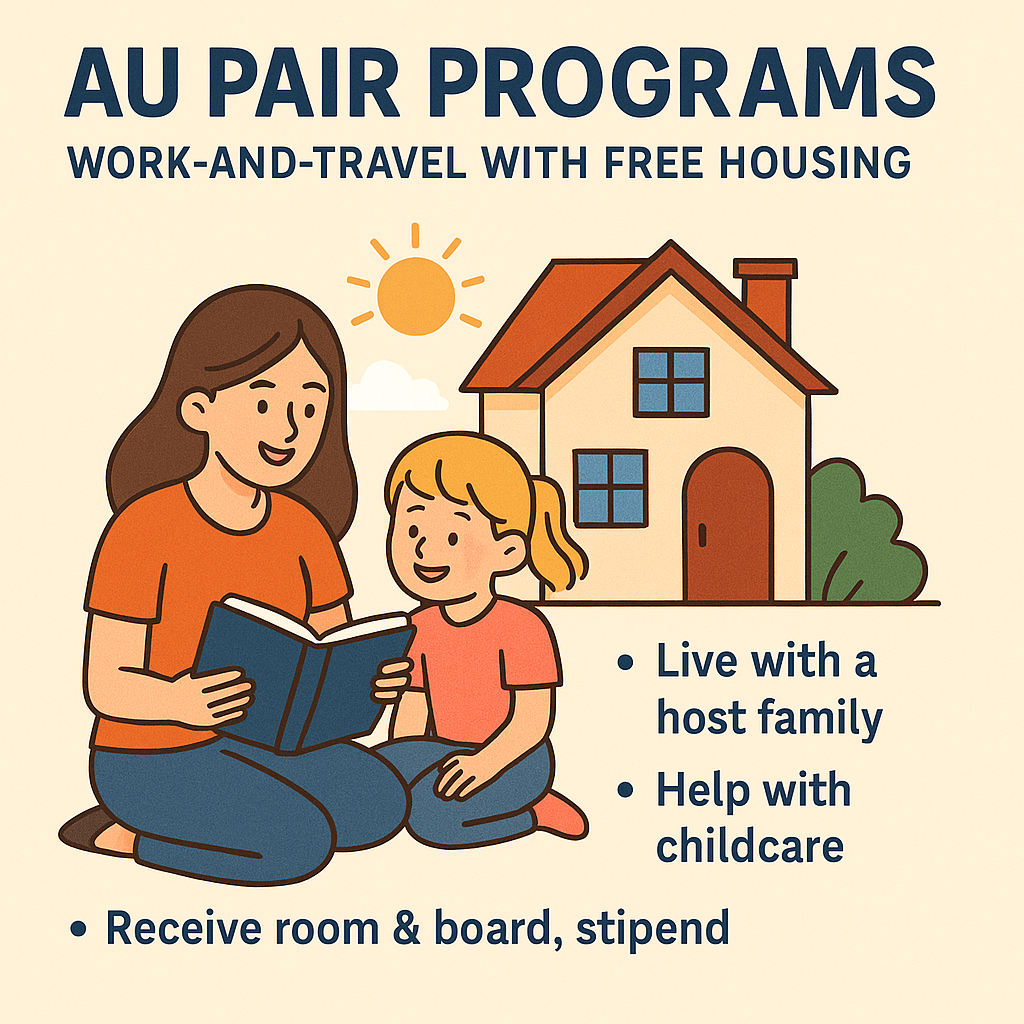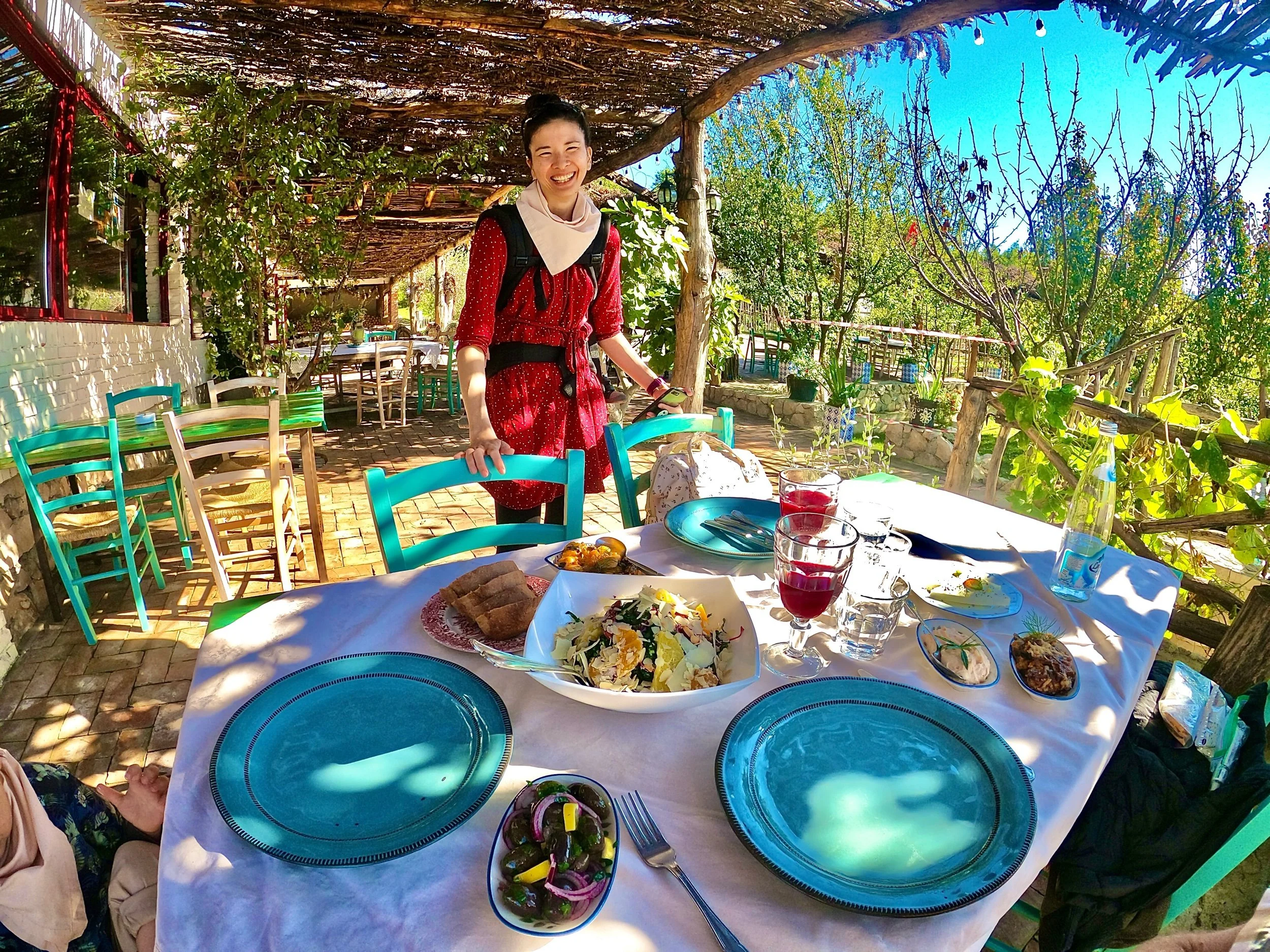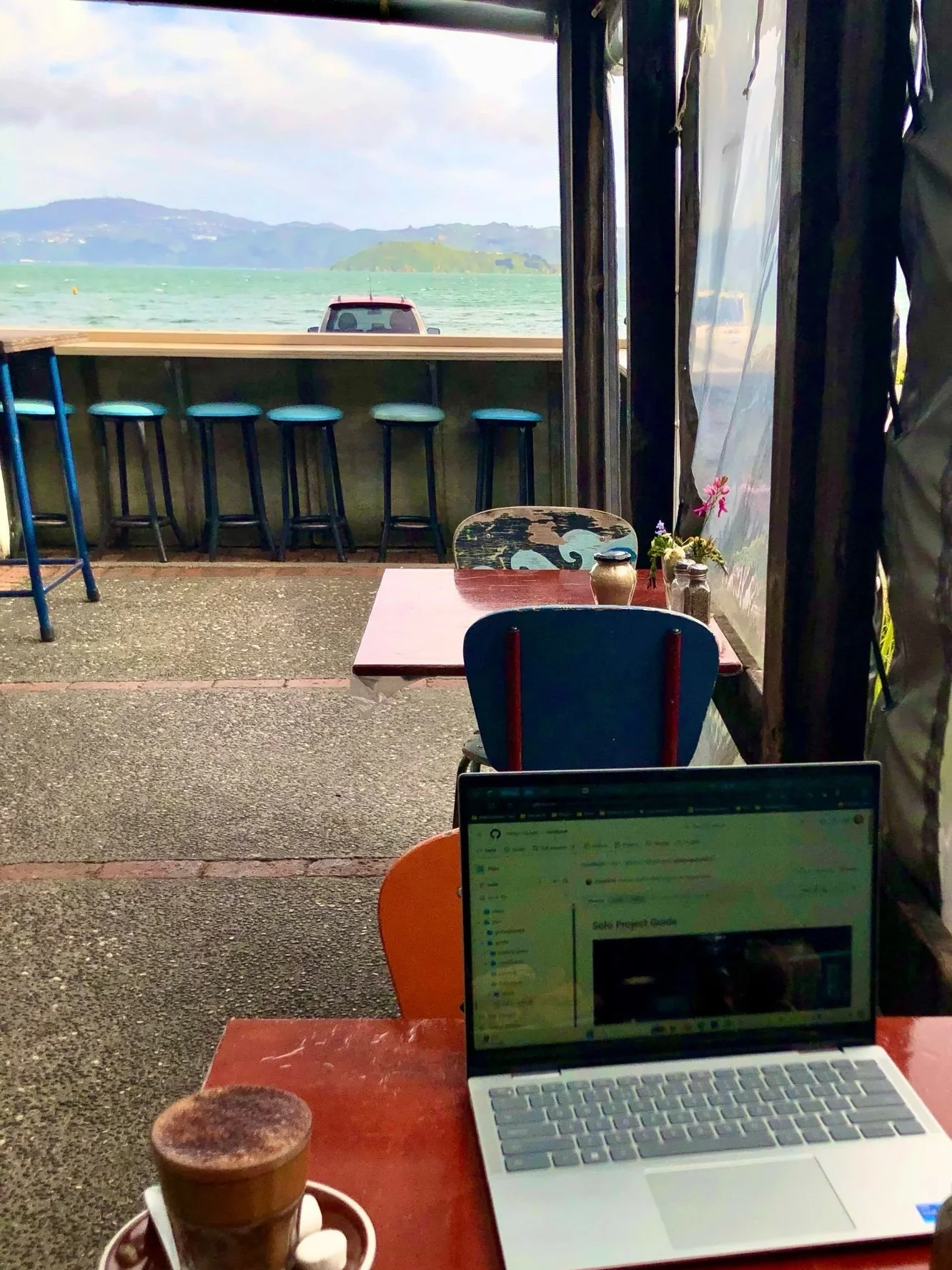One of the top reasons people pursue remote work is the dream of traveling or living abroad. Many Americans are looking for ways to work overseas and immerse themselves in new cultures. And while fully remote jobs (like coding, marketing, or content writing) can make it possible to live anywhere, there’s another category of work worth knowing about – jobs specifically designed to help you explore the world with built-in visa pathways, housing perks, or cultural exchange benefits. Even if these aren’t high-paying in the traditional sense, they typically offer a legal way to stay in a country longer than a tourist visa would allow (we’ll explain why this is important below).
We’re talking about “work-and-travel” jobs – opportunities like:
Teaching English abroad (one of the easiest overseas jobs for teachers and English speakers)
Becoming an au pair (live with a host family)
Taking a working holiday (temporary work visas for young travelers)
Doing volunteer or work-exchange programs (trade work for room and board)
Jobs on cruise ships or as a flight attendant (get paid to travel)
While these roles might not make you rich, they make it easy to get abroad fast, often at very low cost (or no cost at all). In fact, they’re some of the easiest ways to legally live and work in a foreign country – even without an advanced degree or years of experience.
The Overseas Work Visa Catch-22 (and How to Beat It)
If you’ve ever thought, “I’d love to get a job in Europe or Asia, but how would I even start?” — you’re not alone. The truth is, there’s a bit of a visa Catch-22 for working abroad:
✅ To work in a foreign country, you need a work visa.
❌ But to get a work visa, most countries require you to have a job offer first.
🔄 And to get a job offer, most employers want you to already have a visa.
It’s a frustrating loop. But there are proven ways to break out of that cycle and make your overseas dream job happen:
Get there first (then look for work): Some people simply fly to their target country on a tourist visa or working holiday visa, and look for jobs locally once they arrive. Being on the ground – networking in person, showing up to interviews, and being available immediately – can dramatically increase your odds of being hired. (Warning: some countries frown on job-hunting while you’re on a tourist visa, so be mindful of local regulations. If in doubt, consider the next options instead.)
Study first, work later: If you enroll in a university or vocational program abroad, you’ll usually get a student visa that includes the right to work part-time. After graduation, many countries offer a post-study work visa, allowing you to stay and apply for jobs locally. This route is more expensive (you have to pay tuition), but it’s a great way to immigrate permanently – and one of the few options with no age limits in some countries. You gain education and a foothold in the job market abroad.
Start with a “shortage” job: This is the most affordable and effective fast-track path. Apply for jobs that are in high demand in your target country – especially those listed on the government’s skills shortage list. These roles often come with pre-approved work visas or sponsorship because the country needs people to fill them. (We help people find these through our FastLane Abroad service, which maps out visa/job matches.) And guess what? The #1 most in-demand job worldwide – found on the shortage lists of dozens of countries – is Teaching English! If you’re a native English speaker (or near-fluent), you already qualify for this pathway. With a quick TEFL certification (Teaching English as a Foreign Language), you can get hired to teach in South Korea, Spain, Thailand, Vietnam, Mexico, Japan – just to name a few. These teaching jobs for Americans and other English-speakers often include visa sponsorship, housing assistance, and even travel reimbursements. (Some countries require that you have a four-year degree for the work visa, but many others only ask for a TEFL certificate and fluency in English.)
Bonus: Even if you don’t want to move abroad permanently, you can teach English online – a legit remote job you can do from your laptop anywhere in the world, and a great income source to support your travels.
The Strategy in a Nutshell
If you want to move abroad fast, don’t wait for the perfect high-paying job or special visa to appear. Start with something that gets you in the door, like:
A job that comes with visa sponsorship – for example, teaching English, au pair programs, or hospitality roles that hire foreigners.
A working holiday visa – if you’re eligible by age and nationality, this lets you work odd jobs while traveling.
A student visa with work rights – study abroad and work part-time, then leverage post-study work visas.
Once you’re in the country legally, doors start to open:
You can network in person and discover opportunities faster.
You’re eligible for local job listings (many employers only hire candidates who are already in-country).
You’ll gain language skills and cultural experience, making you a stronger job candidate.
After fulfilling your initial contract or stay, you might switch to a better job or a new visa – many people transition to higher-paying roles or longer-term visas once they’ve got that first overseas experience.
Think of it as Stage One of a bigger plan. You’re not stuck in that first job forever – you’re using it to leverage your next opportunity abroad. Get your foot in the door now, and you can always climb the ladder or change paths later.
Best Work-and-Travel Jobs to Kickstart Your Overseas Adventure
These are some of the most popular “earn-while-you-travel” roles that can get you overseas, help you secure a visa, or fund your lifestyle while you explore new places. Each has its own pros and cons, which we’ll break down so you can choose the best fit for your goals, timeline, and personality.
Teaching English Abroad (TEFL/TESOL) – The Worldwide Demand for Teachers
Teaching English as a foreign language is arguably the easiest overseas education job to start with if you’re a native (or fluent) English speaker. It’s a common first step for many world travelers. In fact, a number of famous travel bloggers and digital nomads funded their early adventures by teaching English overseas – for example, Drew Binsky started out teaching English in South Korea, Nomadic Matt taught in Thailand, the couple behind Goats On The Road (Nick and Dariece) taught in China, and even Jenny from Eat Wander Explore started out by teaching English in Japan. You can teach in a school abroad (very common in Asia, Europe, South America) or teach online from wherever you are – or do a mix of both over time.
Teach Abroad (In-Person): Countries like Japan, South Korea, China, Thailand, Vietnam, Spain, Mexico, and many others constantly seek English teachers. Typically, you’d sign a 6–12 month contract with a school or language institute. Key requirements usually include being a native (or near-native) English speaker and having a TEFL certification (TEFL = Teaching English as a Foreign Language). Some programs (especially public schools or government-sponsored programs) also require a bachelor’s degree in any subject – mainly due to visa rules. The good news is these teaching jobs often include free housing (or a housing allowance), assistance with the visa process, and sometimes reimbursement for airfare. That means your major living expenses are covered, so even a modest local salary can go a long way.
Example: In South Korea, an ESL teacher might earn around $1,800–$2,400 USD per month plus a free apartment. In China, it could be about $1,200–$2,000/month plus housing. In some less-developed countries, the pay might be lower (maybe $800–$1,500/month), but the cost of living is also very low, and housing is often provided. You won’t get rich doing this, but you can usually live comfortably and even save a bit of money (many teachers manage to save $5k–$10k in a year) because your rent is $0 and local food/transport is cheap. Teaching hours are typically around 25 hours of classroom time per week (plus prep), so it’s full-time work but not an overwhelming schedule. It’s a fantastic way to experience a new culture while having a safety net (steady salary + housing in place).
Teach English Online: If moving abroad right away isn’t feasible, you can still teach English remotely! There are many online tutoring platforms (e.g. VIPKid, Tutor.com, Outschool, Teachable, Cambly, iTalki, Preply, etc.) where students (often children in countries like China or Korea) take English lessons over video chat. You set your availability and conduct 25- or 50-minute lessons using their curriculum (or sometimes your own). You can also find students independently via tutoring marketplaces or by marketing your services on social media.
Pay: Online teaching typically pays by the hour. Beginners usually start around $10–$20 per hour. If you have a degree, a TEFL certificate, or prior experience, you might find gigs in the $20–$30/hour range (for example, some platforms that cater to business professionals or European students pay more, and private students you find on your own might pay a premium). Realistically, many new online teachers earn about $15/hour to start. If you manage to fill a schedule of 20-30 hours a week, that’s roughly $1,500–$2,000 a month – enough to support yourself in a low-cost country. Some industrious teachers who work peak hours across multiple platforms (and build up great reviews) can push closer to $3,000–$4,000 a month, but that usually comes after gaining some experience and reputation. Often, teaching online is a good side income to combine with other work, unless you commit to it full-time. The nice thing is the flexibility – you can open lesson slots when you want, and teach from anywhere you have a stable internet connection. Demand is steady; millions of people worldwide want to learn English, so it’s a skill you can always fall back on.
How to Get Started (and Why TEFL Certification Matters): The main credential you’ll need is a TEFL certificate (or a TESOL, which is essentially the same type of certification for teaching English). Getting TEFL-certified typically involves ~100–120 hours of coursework, which you can do online in a few weeks (intensively) or over a couple of months part-time. The course teaches you how to plan lessons, teach English grammar, manage a classroom, and so on. While a TEFL certificate might not be legally required for every job, having one makes your life a lot easier: you’ll get better job offers, sometimes higher pay, and crucially, it often qualifies you for a work visa as an English teacher. The good news is TEFL courses aren’t very expensive, and some even include job placement assistance or internships to get you started.
👉 Get Certified & Teach Overseas: We partner with a TEFL provider, Premier TEFL, that offers reputable online TEFL courses – and they’ll guarantee you an internship placement after you certify (check out their paid internship programs). When you finish the course, they line up a teaching placement for you in an exciting location (Europe, Asia, etc.), so you can hit the ground running. Programs like these also often help with your visa paperwork, and some include housing during the internship. It’s a fantastic option if you want a smoother transition into teaching abroad without doing all the job hunting yourself.
Of course, if you’d rather find teaching jobs on your own, you absolutely can – there are plenty of TEFL job boards and Facebook groups where schools post openings. Start applying directly to schools in the country of your choice, or look into government-run programs (like South Korea’s EPIK or Japan’s JET Program, which we mention below). And if you’re going the online teaching route, check the requirements of platforms like VIPKid or Preply – usually they’ll want to see that TEFL certificate and maybe a short demo lesson video.
(Note: Teaching English abroad truly tops the list of overseas jobs Americans can land easily. It’s an incredible foot-in-the-door if you have the travel bug and want international work experience.)
Au Pair Programs – Live Abroad as a “Big Sibling” (with Free Housing)
If you’re a younger adult (typically age 18–30) and love the idea of cultural exchange – especially if you enjoy caring for kids – becoming an au pair is another unique way to live overseas. An au pair is like an international nanny or big sibling: you live with a host family in another country, help with childcare and some light household duties, and in exchange you get free room and board, meals, and a small stipend. It’s essentially a work-and-travel cultural immersion program that can be an adventure in itself.
What to Expect: As an au pair, you become part of the family’s daily life. You might help get the kids ready for school, play with them, assist with homework, and do some light housework or cooking (usually just for the children). Au pairs generally work about 25–35 hours per week, and typically have at least 1–2 days off each week (plus sometimes a bit of paid vacation during the year). Most au pair placements last 6 months to 1 year (with the possibility to extend in some cases). Au pair programs are common in Europe (France, Germany, Spain, the Nordic countries), as well as in places like the United States, Australia, and China. Each country’s program has its own rules – for example, the U.S. requires au pairs to be 18–26, unmarried with no children, and the placement must be arranged through a designated agency. Many European countries allow au pairs up to age 30.
Pay (Stipend): Au pairs do receive a stipend, but it’s not a traditional salary – think of it more as pocket money since your housing and meals are already covered by the host family. For instance, in the U.S., host families must provide a minimum stipend of about $195.75 per week (around $800/month). In Western Europe, typical stipends range from roughly €250 to €450 per month, depending on the country and hours worked. Clearly, you won’t choose an au pair program to make money – the real “compensation” is the free accommodation (often in expensive cities) and the priceless experience of living abroad cheaply.
Perks: The non-monetary perks of being an au pair are huge if you value travel and cultural immersion. Your room and meals are covered, so you could live in, say, Paris, Tokyo, or Berlin without paying a dime in rent – that alone is worth thousands of dollars in savings. Many programs include additional benefits too: for example, U.S. au pairs get up to $500 toward taking classes at a local college (education is part of the cultural exchange). Some host families might include you in their own travels or holidays (imagine spending the summer at a beach house or visiting grandparents in another region – all expenses paid). You’ll usually have health insurance arranged through the program, and sometimes a public transit pass or use of the family car. But perhaps the biggest perk is the intangibles: you become part of a family in another country. You’ll learn the language, traditions, and local lifestyle in an authentic way. Many au pairs form lifelong bonds with their host families and stay in touch for years.
How to Get Started: It’s wise to go through a reputable au pair agency or platform to ensure a safe and legal placement (and to help with the visa paperwork). There are self-service matching websites like AuPairWorld (popular for finding host families in Europe, Asia, etc.) as well as formal agencies (for example, InterExchange for the U.S. J-1 au pair program). We recommend checking out AuPairWorld for finding families in Europe and beyond, or InterExchange’s Au Pair USA program if you’re interested in coming to the States as an au pair. These organizations guide you through the process, vet families (and au pairs), and assist with obtaining the proper au pair visa. General requirements usually include being within the program’s age range (commonly 18–26 or up to 30), having a clean background check, and some childcare experience (it can be informal, like babysitting siblings or neighbors – you’ll detail any experience in your application). You don’t necessarily need formal training, but you do need to be adaptable, responsible, and genuinely enjoy working with kids. In some countries, basic knowledge of the local language is either required or recommended (for example, knowing some French will help if you want to au pair in France, though many families will speak English with you).
Is it for Me? Au pairing is best for someone who wants a deep cultural immersion and doesn’t mind putting their career on pause for a short time (or is in a natural gap year). It’s a popular gap-year choice or a stepping stone into living abroad. For example, you might spend a year in Germany as an au pair, become fluent in German, and later use that language skill to get another job in Germany or just enrich your personal experience. It’s also one of the few ways to legally stay long-term in a country without being a student or having a traditional work visa, which is incredibly valuable if you just want time abroad. If you need to be earning a substantial salary right now or have significant financial responsibilities, this probably isn’t the best option at the moment. But if you can afford to earn just a modest stipend for 6–12 months in exchange for an unforgettable experience, it can be amazing. (Some au pairs also take language classes or online courses during their free time, so they return home with new skills or even credentials in addition to memories.)
Resources: To learn more or find current au pair opportunities, check out platforms like AuPair.com or AuPairWorld for worldwide matches. If you’re not American and wish to au pair in the USA, you must go through one of about a dozen official State Department-designated agencies (InterExchange, AuPairCare, etc. are examples). They will handle the visa sponsorship and match you with vetted families. For Americans going to Europe or elsewhere, the self-service websites are a great starting point.
(Being an au pair might not build your bank account, but it’s an incredible overseas job opportunity for young Americans to travel safely and immerse themselves in another culture.)
Other Work-&-Travel Opportunities (Working Holidays, Seasonal Jobs, and More)
Beyond teaching English and au pair programs, there are several other ways to work and travel abroad, especially if you are under 30 (many of these options have age limits). Here are a few popular categories of overseas travel jobs and programs:
Working Holiday Visas: Countries like Australia, New Zealand, Canada, the UK, Japan, South Korea, and many others have bilateral working holiday agreements. These visas allow young adults (usually 18–30, and up to 35 in some cases) from eligible countries to live and work for 1–2 years in the host country. On a working holiday, you’re free to take on short-term or casual jobs – for example, you might fund your travels by working in a café, doing farm work, waiting tables, or temping in an office. This is not a remote job setup (you’ll be working locally), but it gives you the freedom to move around within the country and experience different regions while making some money. Pay can vary widely: some gigs might only cover basic expenses, while others (especially if you land a job in a field with a local labor shortage) can pay decently. For instance, Australia’s working holiday visa is famous – backpackers earn money picking fruit or working in hospitality, then travel around to sightsee. If you’re itching for adventure and don’t mind doing odd jobs, this route is a fantastic overseas job opportunity for Americans and other nationals who qualify. Many working holiday programs even provide support in finding jobs (job boards, orientation sessions, etc.), and certain jobs can earn you extra benefits – e.g. in Australia, completing a specified amount of farm work can make you eligible to extend your visa for another year.
Seasonal Jobs & Travel Industry Gigs: Another angle is to take a seasonal job in tourism. For example, you could work a ski season at a mountain resort (often with lodging provided for staff - there’s even an amazing one in Switzerland!), or a summer job at a beach hotel or even a U.S. National Park lodge. These jobs typically include housing (and sometimes meals), similar to au pair setups, because you live on-site for the season. The pay might be modest, but since your living expenses are low, you can save or use your earnings to travel in the off-season. Working on a cruise ship or as a flight attendant also falls into this category – you are literally getting paid to travel, as your job involves moving from place to place. Cruise ship jobs (from hospitality staff to entertainers to deckhands) provide free accommodation onboard and a salary, plus you get to visit various ports of call. Being a flight attendant lets you fly around the world (or domestically) and generally comes with free or discounted flight benefits for your personal use. Keep in mind, these are more like lifestyle careers and can involve long, irregular hours – but for the right person, they’re an exciting way to see the world. The main idea here is: if your priority right now is travel and adventure and not necessarily climbing a career ladder, these kinds of seasonal or travel industry jobs can be a fun way to sustain your journey for a while.
Volunteer Work Exchanges: If getting a paid job isn’t a requirement for you, consider work-trade programs like Workaway, HelpX, or WWOOF (World Wide Opportunities on Organic Farms). These programs connect travelers with hosts who offer free accommodation (and often meals) in exchange for a few hours of help per day. You might be volunteering on a farm, helping at a hostel, doing some childcare (short-term, less formal than an au pair), teaching a skill, or building something – it really depends on the host’s needs. In return, you get a place to stay and the experience of living with locals. This isn’t a way to earn money, but it can significantly extend your travels on the cheap. For example, you could spend a month in a rural Italian village helping on a vineyard, or a few weeks in Costa Rica working at a jungle eco-lodge – with zero housing costs. Just keep in mind that because you’re technically not an employee (it’s a cultural exchange), you’ll usually be doing this on a tourist visa, and you should have some savings or a side income for other expenses. Many long-term backpackers mix and match work exchanges between their paid work stints or use them as a way to slow down their travel pace and save money. (Tip: Always use reputable platforms, read reviews from past volunteers, and communicate clearly with hosts about expectations.)
A Note on Programs & Perks: We’ve partnered with a few organizations that specialize in work & travel programs, and we already mentioned the TEFL internship programs above. There are even some work-travel opportunities that cover airfare for you if you commit to a longer contract. For example, certain government-sponsored teaching programs (like South Korea’s EPIK or Japan’s JET Program) will pay for your flight, and some farm work programs in Australia offer travel stipends or bonuses. Keep an eye on our resources page (or reach out to us directly) for links to these kinds of deals – we’re happy to point you in the right direction and share any current opportunities we know of.
As you can see, there are many ways to see the world while supporting yourself. Some paths, like teaching or a working holiday, come with an official visa to live overseas for an extended period. Others, like freelancing online or doing short-term work exchanges, rely on the flexibility that remote income or tourist visas give you. The best approach depends on your goals, budget, and comfort zone.
Ready to take the leap? You don’t have to navigate all these options alone. Whether you’re eyeing a teaching gig in Japan, a gap year in New Zealand, or any other overseas adventure, we can help set you on the right path. For personalized guidance on finding overseas jobs and opportunities that fit your situation, check out our FastLane Abroad service – it’s designed to map out your best options and accelerate your move abroad. 🌎✨ Good luck on your journey! Safe travels and happy job hunting.
As you can see, there are many ways to see the world while supporting yourself. Some, like teaching or a working holiday, give you an official visa to stay abroad. Others, like freelancing online or doing work exchanges, rely on the flexibility that remote income gives you to travel on tourist visas (or short-term stays). In the next section, let’s talk a bit about those remote work visas and the concept of geoarbitrage, which can be a game-changer for remote workers.
Overseas Jobs for Americans – Stage One
(teaching, au pair, working holiday, cruise/flight jobs, etc.)
➡️ Fast entry, visa-friendly, cultural immersion.
➡️ Great for getting abroad quickly, even if you don’t have in-demand skills or big savings.
➡️ Best starting point: TEFL certification + teaching jobs abroad.
Remote Careers – Stage Two
Once you’re abroad, you might want to pivot into more sustainable, higher-paying overseas job opportunities. This is where remote work comes in — and it’s also open to you if you’d rather skip teaching/au pair work and go straight to a career you can do from anywhere.
Comparing Remote Career Paths
Remote Tech Careers (Coding, Data, Cloud):
Income: High ($60k+ starting; often $100k+)
Effort: Several months of training (no degree required)
Lifestyle: Stable, location-independent, digital nomad visa eligible
Remote Non-Tech Professional Jobs (Marketing, Design, Writing):
Income: Medium–High (often $40k–$80k+)
Effort: Build portfolio + some training
Lifestyle: Flexible, remote, but competitive
Teaching English (Remote or Abroad):
Income: Low–Medium ($15–$25/hour online; $1k–$2.5k/month abroad)
Effort: TEFL certification (1–2 months)
Lifestyle: Culturally rich; stable first step abroad
Au Pair / Work Exchange:
Income: Very Low (stipend + free housing)
Effort: Low (basic childcare experience + visa paperwork)
Lifestyle: Deep cultural immersion, limited savings
Freelancing / Small Online Business:
Income: Variable ($5/hour – six figures)
Effort: Medium; trial & error to build clients
Lifestyle: Total freedom if you succeed, but unstable at first
FastLane Abroad + Remote Coding = Long-Term Freedom
Our FastLane Abroad service is designed to help you find the quickest, legal ways to get abroad (like teaching or working holidays).
But if you want to secure high-paying remote work and qualify for digital nomad visas, you’ll need future-proof skills. That’s where our Remote Coding programs come in:
Remote Coding Roadmap (Book, $47):
A self-directed coding bootcamp that lays out the exact skills, projects, and steps to go from beginner to job-ready. Perfect if you want flexibility and low cost.Remote Coding Bootcamp ($497):
Affordable, structured training that helps you earn certifications, build projects, and match with jobs. Many graduates land jobs paying $40–$80/hour, with the ability to work from anywhere in the world.
Why Tech?
4× more remote job postings in software/data than any other field.
Eligible for many digital nomad visas worldwide.
High demand, even in recessions.
Next Steps: Choose Your Path Abroad
Start Quick: Grab a TEFL certificate and apply for teaching/au pair/working holiday programs.
Go Long-Term: Build high-paying remote skills with coding or data careers.
Combine Both: Use a fast overseas job to get abroad now — then pivot into a remote tech career for financial independence and digital nomad visas.
💡 Remember: You don’t need a degree or huge savings. What you need is a starting point and a clear roadmap. We’ll guide you at every stage.




















